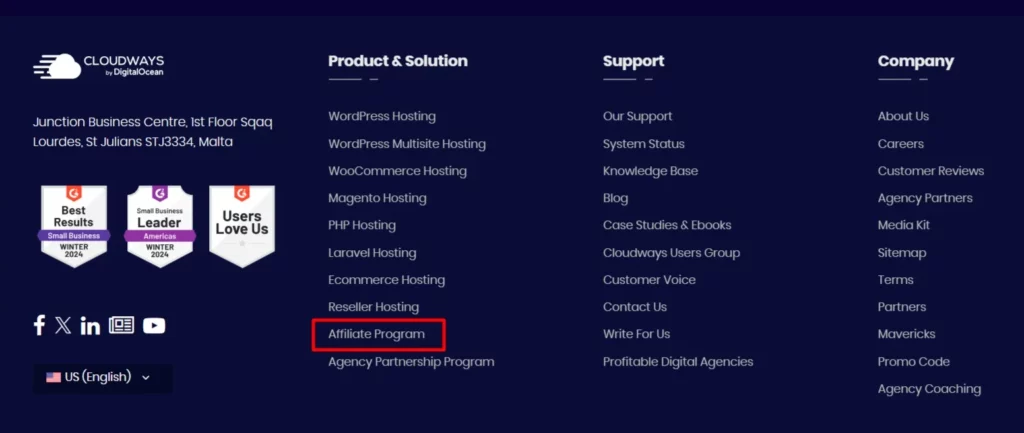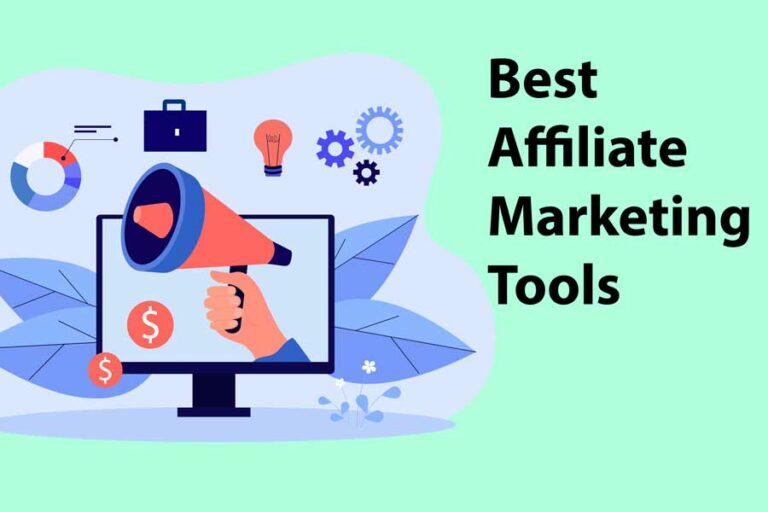How To Start Affiliate Marketing With No Audience in 2024
Starting affiliate marketing without a big audience may feel overwhelming, but don’t worry! I’ll show you how to get started on the right foot.
First, set up a website or blog to showcase your expertise. Then, create helpful content that people want to read. Together, we’ll learn how to attract the right audience and build strong connections.
In this guide, I’ll walk you through the essentials of how to start affiliate marketing with no audience. We’ll cover the basics, like what affiliate marketing is all about, how to make valuable content, and ways to attract more visitors to your site.
Table of Contents
Understanding the Potential of Affiliate Marketing
Affiliate marketing is when you earn money by promoting other people’s products. You find a product you like, promote it to others, and earn a piece of the profit for each sale you make. Your sales are tracked through special links.

Affiliate marketing is a great way to make money online. Brands and affiliate marketers both benefit from this less traditional marketing approach.
According to Optinmonster, affiliate marketing is a growing business, worth over $17 billion in 2023, up from $13 billion in 2016. It’s expected to keep growing and could reach $40 billion by 2030.
In this beginner’s guide, I’ll show you how to start your affiliate marketing business without followers and what advantages you can expect.
8 Easy Steps: How To Start Affiliate Marketing With No Audience
Starting your affiliate marketing is a personal adventure. We all begin somewhere, and building an audience is key, especially in the beginning. Even with no audience yet, there are ways to start your affiliate marketing journey.
You can start affiliate marketing without spending money upfront, but it might take longer to see results.
I’ll guide you through free methods as well as those needing a bit of investment, nothing major. Let’s dive into the steps to begin your affiliate marketing niche.
1- Finding Your Niche
Choosing the right niche is often the hardest part of starting affiliate marketing for beginners.

But fear not! Begin by selecting a low competitive niche that aligns with your interests and expertise. Research and choose affiliate programs with high profit margins and generous commission rates. This strategic approach sets the stage for success in affiliate marketing.
Let me help you with some strategies to choosing a affiliate marketing niche.
Discovering Your Passion and Area of Expertise
Take a closer look at your own interests, skills, and expertise. Consider what topics you’re passionate about and knowledgeable in. Reflect on your hobbies, professional experience, and areas of expertise that you can leverage to create valuable content and recommendations.
Remember, the key to success in affiliate marketing is authenticity, so choose a niche that aligns with your interests and allows you to genuinely connect with your audience.
Consider my case: I am passionate about Digital Marketing, making money online and SEO, so I always prefer to write around these topics on my blog “Digit Crafter” and have been promoting affiliate programs related to digital marketing that resonate with my knowledge, expertise and hobby.
Now you might be wondering where to find affiliate products that suit your needs. I can assist you with this too.
How To Find Affiliate Products For Your Niche?
When choosing affiliate products to promote, consider factors such as the relevance to your audience, commission rates, cookie durations (the time window in which you can earn a commission after a user clicks on your affiliate link), and the reputation of the merchant. Additionally, ensure that you comply with all FTC guidelines and disclose your affiliate relationships to your audience transparently.
There are several places where you can find affiliate products to promote. Here are some of the best options:
Affiliate Networks: These platforms act as intermediaries between merchants (sellers of products) and affiliates (promoters). Some popular affiliate networks include:
- ShareASale
- CJ Affiliate (formerly Commission Junction)
- Impact
- ClickBank
- Amazon Associates
Direct Affiliate Programs: Many companies offer their own affiliate programs. If there’s a specific product or company you’re interested in promoting, check their website for information on their affiliate program. Sometimes this information can be found in the footer of their website under “Affiliates” or “Partnerships.”
For instance, let’s take a look at the footer section of Cloudways, where they provide details about their affiliate program.

Marketplace Websites: Websites like Etsy, eBay, and Shopify allow individuals to become affiliates and promote products listed on their platforms.
Digital Product Marketplaces: If you’re interested in promoting digital products such as eBooks, courses, or software, platforms like Udemy, Teachable, and ClickBank specialize in these types of products.
Niche-Specific Platforms: Depending on your niche, there might be specialized affiliate platforms catering specifically to it. For example, if you’re in the fitness niche, you might find platforms like Bodybuilding.com’s affiliate program.
Subscription Services: Many subscription-based services, such as streaming platforms (Netflix, Hulu), software services (Adobe Creative Cloud, Microsoft Office 365), and membership sites (Skillshare, Audible), offer affiliate programs.
Product Launch Platforms: Keep an eye on platforms where new products are often launched, such as Kickstarter and Indiegogo. While not traditional affiliate programs, you can sometimes reach out to creators to negotiate a referral arrangement.
2- Create A Blog For Affiliate Marketing
Creating a niche blog is a smart move for affiliate marketing, even if you don’t have many followers yet.

The cool thing about blogs is that with good technical SEO and regular posts that people find helpful, you can get more visitors over time and become a trusted expert.
When you start your blog, it’s important to find out what people are searching for in your topic area. This is called keyword research. It helps you understand what topics are popular and what people want to know.
When you write blog posts, think about what problems your readers might have. Try to answer their questions and provide helpful information. Write articles that really help them with their issues. This way, your readers will find your content valuable and keep coming back for more.
Pro Tip: Make sure to use free tools like Pretty Links to shorten your links in your articles. This makes your links look cleaner and easier to share.
By consistently providing valuable content, you can build trust with your audience. Over time, this will lead to more people finding your blog through search engines, telling their friends, and coming back for more.
If you do it right, your blog can become a top authority site that people trust and buy from.
👉 Related: If you’re looking for more tips on finding content ideas for your articles, be sure to check out my article “Best Content Writing Ideas“
3- SEO For Affiliate Marketing
Did you know that 18% of searches done on mobile phones end up in a sale within just one day? Imagine if your affiliate link pops up when someone makes that search – that could mean a nice commission for you. But how do you get your website to show up on the first page of search results, where most people look?

Search engines like Google want to see that your blog has relevant content that answers people’s questions. If you can use keywords related to the products and services you’re promoting in your articles, you’re more likely to get visitors from search engines.
To understand how well your website is doing in terms of SEO, it’s a good idea to do a site audit. You can use free tools like Ubersuggest, Ahrefs, Semrush, Aiwebranker and others available online.
These tools look at various aspects of your website, like how well your pages are optimized, the quality of your backlinks, how easy your site is to use, and more. They give you an overall score to show how your website is performing in terms of SEO. Plus, they provide detailed reports about any issues they find on your site.
An affiliate website is effective only when visitors can quickly understand what you’re offering and why it’s relevant to them.
4- Paid Ads For Affiliate Marketing
As an affiliate marketer, getting organic traffic is important, but using some paid ads can also help.

If you have a small budget, consider using pay-per-click Google ads. They can put your website at the top of search results and give you more control over who sees your ads.
When directing your traffic, aim for content like blog posts, YouTube videos, or webinars that offer more than just product pitches. Note that when running Google ads, you can’t send traffic to your affiliate links directly.
Other than Google you can also use social media platforms to run paid ads that direct people to your website. On your site, you can have reviews and engaging content that convince people to buy the product.
Pro Tip: Based on my experience, I’ve found that using Google Ads to send traffic to the landing page of your affiliate blog post works better than other social media platforms.
Create Effective Paid Ads To Promote Affiliate Products
Creating paid ads to sell affiliate products involves several steps. Here’s a step-by-step guide:
Set Up Your Advertising Account: Create an account on your chosen advertising platform if you haven’t already. Follow the platform’s instructions to set up your account, including billing information.
Define Your Target Audience: Identify your target audience based on demographics, interests, behaviors, and other relevant factors. This will help ensure your ads are shown to the right people.
Create Compelling Ad Copy: Write persuasive ad copy that highlights the benefits of the affiliate product and encourages users to take action. Use attention-grabbing headlines, clear calls-to-action, and relevant keywords.
Design Eye-Catching Visuals: Create visually appealing images or videos to accompany your ad copy. Visuals should be attention-grabbing and relevant to the product you’re promoting.
Choose Ad Placement and Format: Select the placement and format for your ads based on the advertising platform’s options and your campaign objectives. For example, you might choose to display your ads in users’ Facebook feeds or as Google search ads.
Set Your Budget and Bidding Strategy: Determine your budget for the ad campaign and choose a bidding strategy that aligns with your goals. Options may include cost-per-click (CPC), cost-per-thousand-impressions (CPM), or cost-per-acquisition (CPA) bidding.
Monitor and Optimize Your Campaign: Once your ads are live, monitor their performance closely. Track key metrics such as click-through rate (CTR), conversion rate, and return on ad spend (ROAS). Use this data to optimize your campaign by adjusting targeting, ad copy, visuals, and bidding strategies as needed.
Comply with Advertising Policies: Ensure your ads comply with the advertising platform’s policies and guidelines, as well as any legal requirements related to affiliate marketing and advertising.
5- Build An Email List
When building your affiliate site, don’t forget about email marketing—it’s important! It can bring in up to 50% more leads than other methods, which means more potential sales for you.
Having your own list means you can reach out directly to people who are interested in your niche whenever you send an email. This lets you promote relevant affiliate offers at the right times.
When starting from scratch, make a page where people can sign up for your emails. Offer something valuable for free, like an ebook or email course, in exchange for their email address.
For example, subscribing to the Digit Crafter platform will lead you to the guide page, where you can download an ebook detailing how I began a niche website for affiliate marketing. You can replicate this process with your subscription form.

Share this page on your different marketing channels to get more subscribers.
You have the option to incorporate pre-designed forms offered by email marketing platforms for gathering email addresses, including:
As your list gets bigger, organize your contacts based on things like their interests or what they’ve bought before. This helps you send them emails about stuff they’re interested in.
In your emails, include links to products or services that actually help your subscribers with their needs.
With a focused and helpful approach, your email list can become a powerful tool for affiliate marketing, no matter how big your audience is right now.
Pro Tip: Regularly analyze your email performance metrics, such as open rates, click-through rates, and conversion rates. This data can provide valuable insights into what types of content resonate best with your audience and help you optimize your email campaigns for better results.
6- Start A YouTube Channel
According to Social Media Examiner’s industry report from 2023, 54% of marketers utilize YouTube, and 59% of marketers intend to boost their usage of YouTube videos.
Focus on creating content that people are actively searching for on YouTube. Answer common questions, solve problems, or provide informative tutorials related to your products. Establish your expertise and provide real value to your audience.
Ensure that your affiliate link is included in the description for all of these efforts.
Below is an example from one of my YouTube videos where I promote affiliate products in the video description.

As you build a loyal viewership around your niche, you can naturally introduce and endorse products in your videos. Use your influence to highlight affiliate offers that you genuinely believe will be valuable to your subscribers.
Starting affiliate marketing without an audience works well when combined with other tactics like collaborating with influencers. Additionally, having good SEO is important for creating titles that attract YouTube users. Affiliate marketers will notice that many strategies for earning money from affiliate programs share similarities.
7- Get influencers on board to expand your business
Influencer marketing is becoming more popular and can really boost your affiliate sales.

Working with influencers is a smart way to use social media and reach a larger audience with valuable content. Why is influencer marketing considered one of the best ways to increase affiliate income?
The main reason is that influencers already have their own followers that you can reach. Their fans trust them and listen to their recommendations. So, if they direct their followers to your website or affiliate link, it brings you more traffic easily.
8- Utilize and make the most of social media platforms.
Even if you don’t have an audience yet, it’s important to focus on growing for the future.

You should promote your affiliate products on social media. Claim your social media profiles that match your website and start connecting with your audience wherever they hang out.
You might spend more time in Facebook groups or on forums like Reddit or Quora. This exposes your name to more people and leads them back to your valuable content on your page or website.
TikTok is a popular platform with over 2 billion monthly users where new trends often start. You can create video content using your phone and promote affiliate products. Although video links aren’t clickable, you can set up a free business account and add a link in your bio.
Facebook has the largest user base, with over 2.96 billion active users. You can find relevant groups and pages to promote your products, and some owners may share your affiliate links for a commission.
YouTube is a massive video search engine where you can start your affiliate marketing journey. Creating engaging content and using YouTube SEO can help you grow your channel and earn revenue from YouTube.
Instagram is visually focused and ideal for affiliate marketing. You can promote products through high-quality picture and video content and use features like reels and stories to reach a wider audience.
LinkedIn has evolved beyond a job-hunting platform and is now used for personal branding and product marketing. Its organic reach is good, but it’s more suitable for professional products.
Twitter is a free platform focused on user engagement. Engaging with big accounts in your niche can help grow your audience. However, recent changes may require becoming a verified user for full potential.
Pinterest is visually oriented and popular for lifestyle items. It’s a good platform to start with if your niche aligns with it.
Start with one or two platforms and focus on them before expanding to others as you see success in affiliate marketing.
3 Actionable Tips For Affiliate Marketing Success
Now that you’ve learned how to start affiliate marketing without followers, let me also provide some tips for success in your affiliate marketing journey.
1- Establish credibility, likability, and trust through content marketing.
Affiliate marketing isn’t about getting rich quickly. Your aim is to offer value to your audience and earn their trust so they’ll want to buy from you. If you just push products without building trust, your chances of success are low.
Content marketing is the most effective method for achieving this. Additionally, when done correctly, it can generate substantial free traffic.
Here are some tips for creating engaging content:
- Address your audience’s problems and concerns.
- Understand your target audience and create content that matches their interests.
- Study your competitors and try to outdo them.
- Use multiple channels to promote your content consistently.
- Be patient; it takes time for your audience and search engines to notice your content.
- Use attention-grabbing headlines and titles to capture interest.
Remember, being genuinely interested in the products you promote can make a big difference. When you’re passionate about something, you’ll naturally spend more time talking about it and recommending it. The more good content you create (making sure it’s optimized for search engines and social media), the more likely you are to see success with your affiliate marketing.
2- Stay consistent in your affiliate marketing efforts
Affiliate marketing has the potential to generate passive income when you establish your unique affiliate link online.
However, in the beginning, when you don’t have many followers, it’s crucial to promote affiliate products effectively.
To maintain consistency in affiliate marketing, it’s essential to have a well-thought-out plan that delivers predictable outcomes.
Here’s what your plan should include:
Select the right affiliate product: Choosing the correct product is crucial. Picking the wrong one can result in wasted time and effort.
Build a list of leads and customers: Establishing a list of potential buyers who are interested in your products is key. This requires setting up an effective affiliate funnel and lead generation system.
3- Building a Connection with Your Audience
As an affiliate marketer, your success depends on forming a strong bond with your audience. It’s not just about promoting products; you need to become a reliable source of helpful information and advice in your niche.
Here are some ways to build a devoted following:
1- Provide Value
Share high-quality, useful content that addresses your audience’s problems and answers their questions. Whether it’s through blog posts, videos, product reviews, or emails, offering value builds trust and credibility.
2- Engage, Engage Engage
Interact with your audience on social media, in blog post comments, or via email. Respond to inquiries, acknowledge feedback, and demonstrate that you care about their concerns. This helps create a personal connection and fosters a community around your brand.
3- Be Genuine
Share your personal experiences and opinions, and be transparent about your affiliate partnerships. Your audience will appreciate your honesty and authenticity, which strengthens trust.
4- Offer Incentives
Consider providing exclusive discounts, freebies, or bonus content to encourage your audience to take action and make purchases through your affiliate links. This demonstrates your appreciation for their support and willingness to provide extra value.
By implementing these strategies and prioritizing your audience’s needs, you can cultivate a loyal following that trusts your recommendations and is more likely to buy through your affiliate links. Remember, building relationships requires dedication and patience, but it pays off in the long run for your affiliate marketing success.
Final Thoughts
I’ve guided you through several strategies to thrive in affiliate marketing, especially if you’re beginning without an audience.
Keep offering valuable content, interacting genuinely, and providing incentives to build trust and loyalty. Always put your audience first and be honest in your communication. With commitment and patience, you can develop a loyal following that believes in your recommendations and sticks with you for the long haul in your affiliate marketing journey.
I’d appreciate your feedback and am here to assist you further. Stay connected!
Disclosure: This blog article contains affiliate links, and if you make a purchase through these links, I may earn a commission at no additional cost to you. Your support through these links helps sustain and improve the content on this platform.
Affiliate Disclosure:
This blog may contain affiliate links. If you click on an affiliate link and make a purchase, I may earn a commission. This does not affect the price you pay. I only recommend products and services I tested and believe will benefit my readers.







